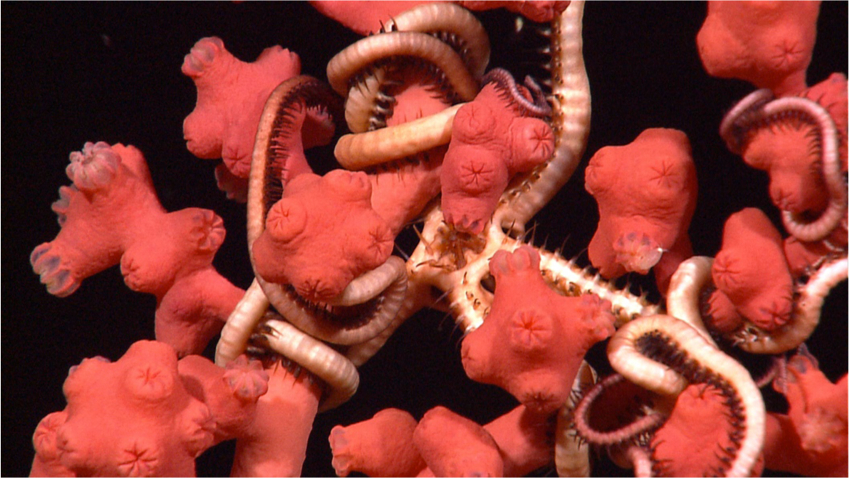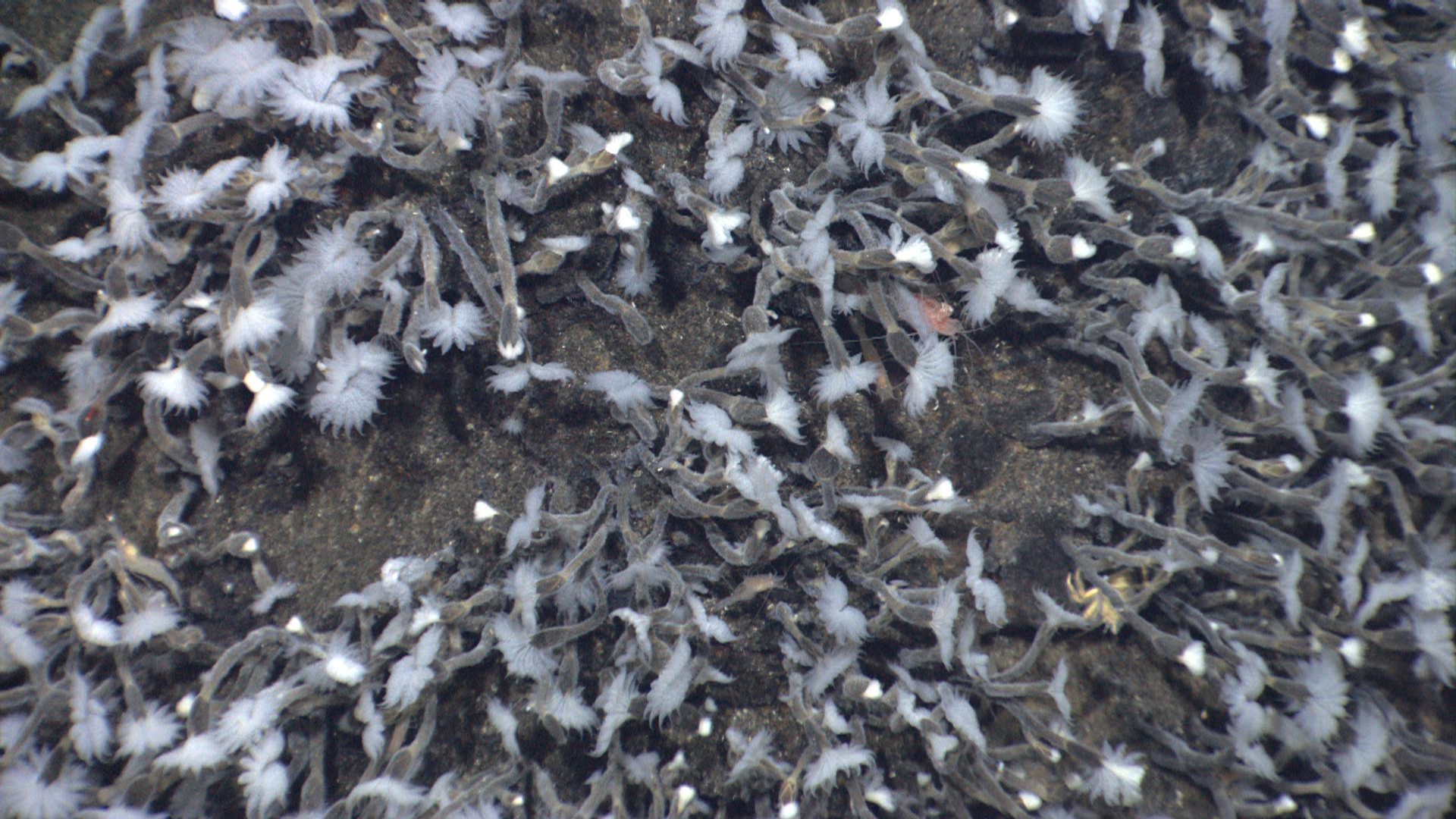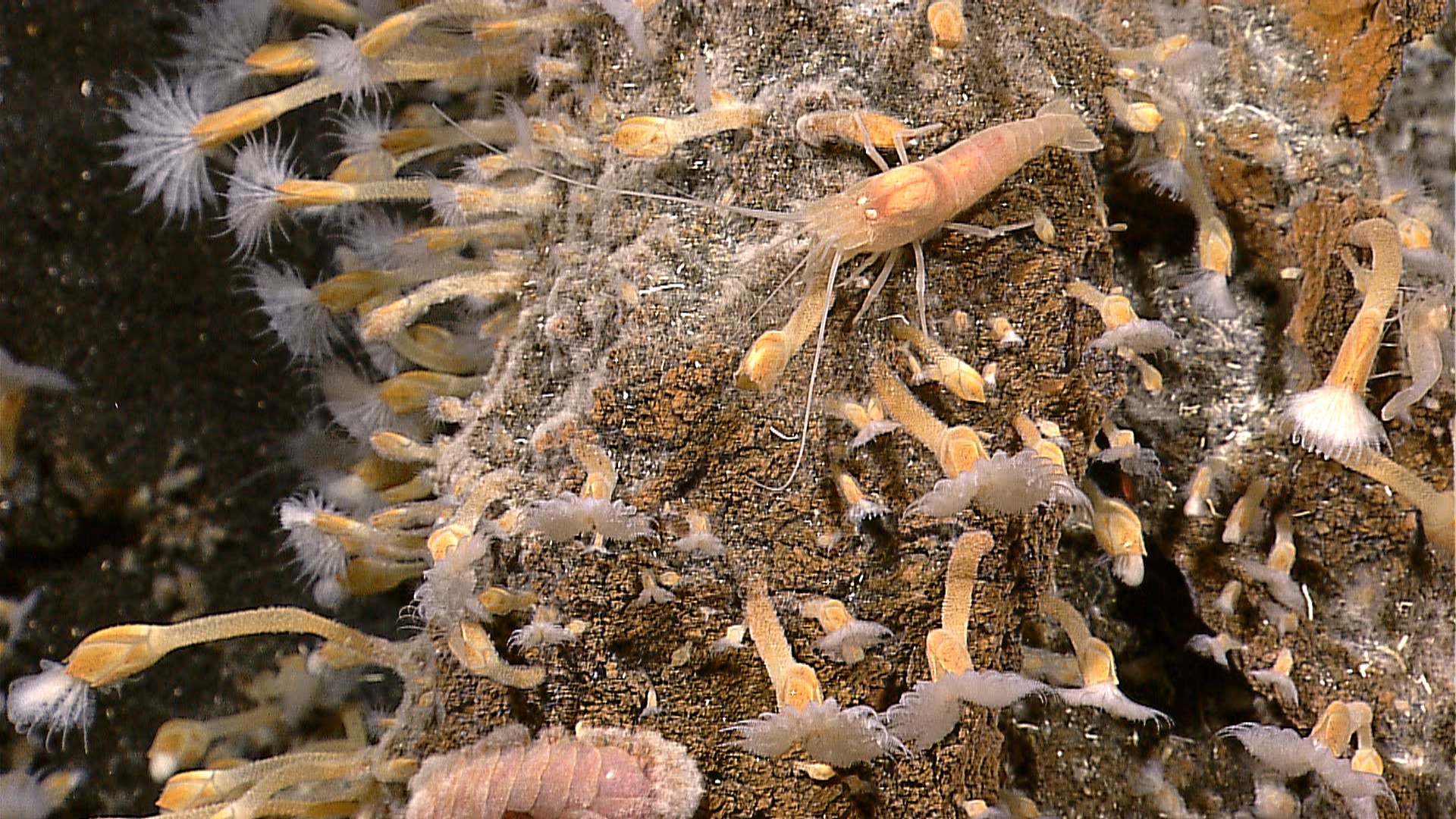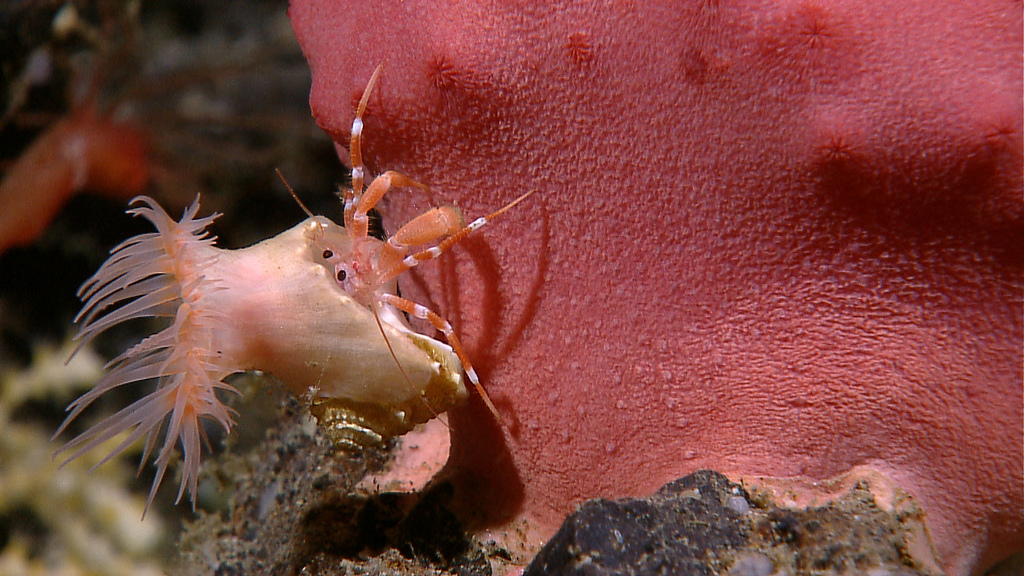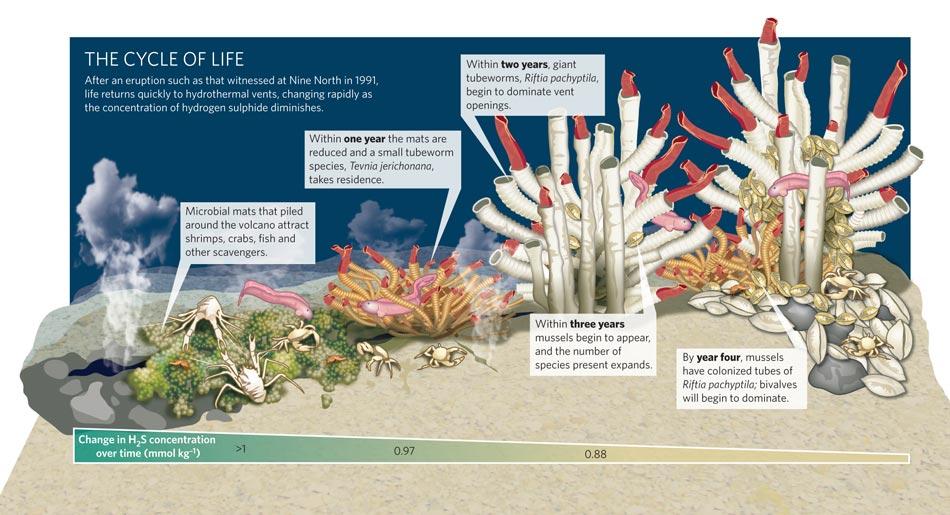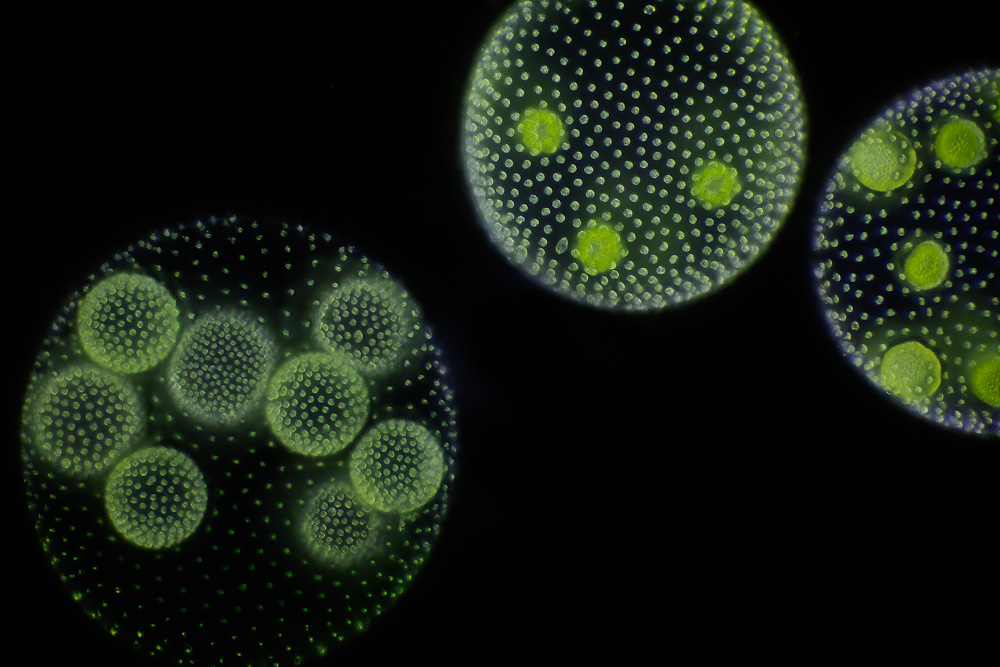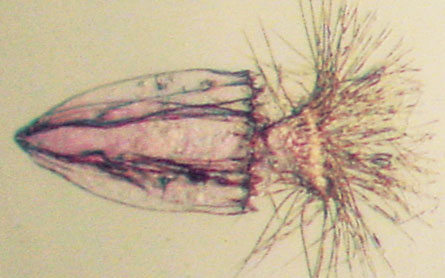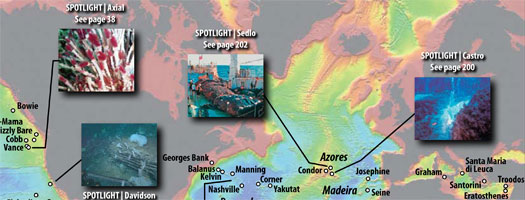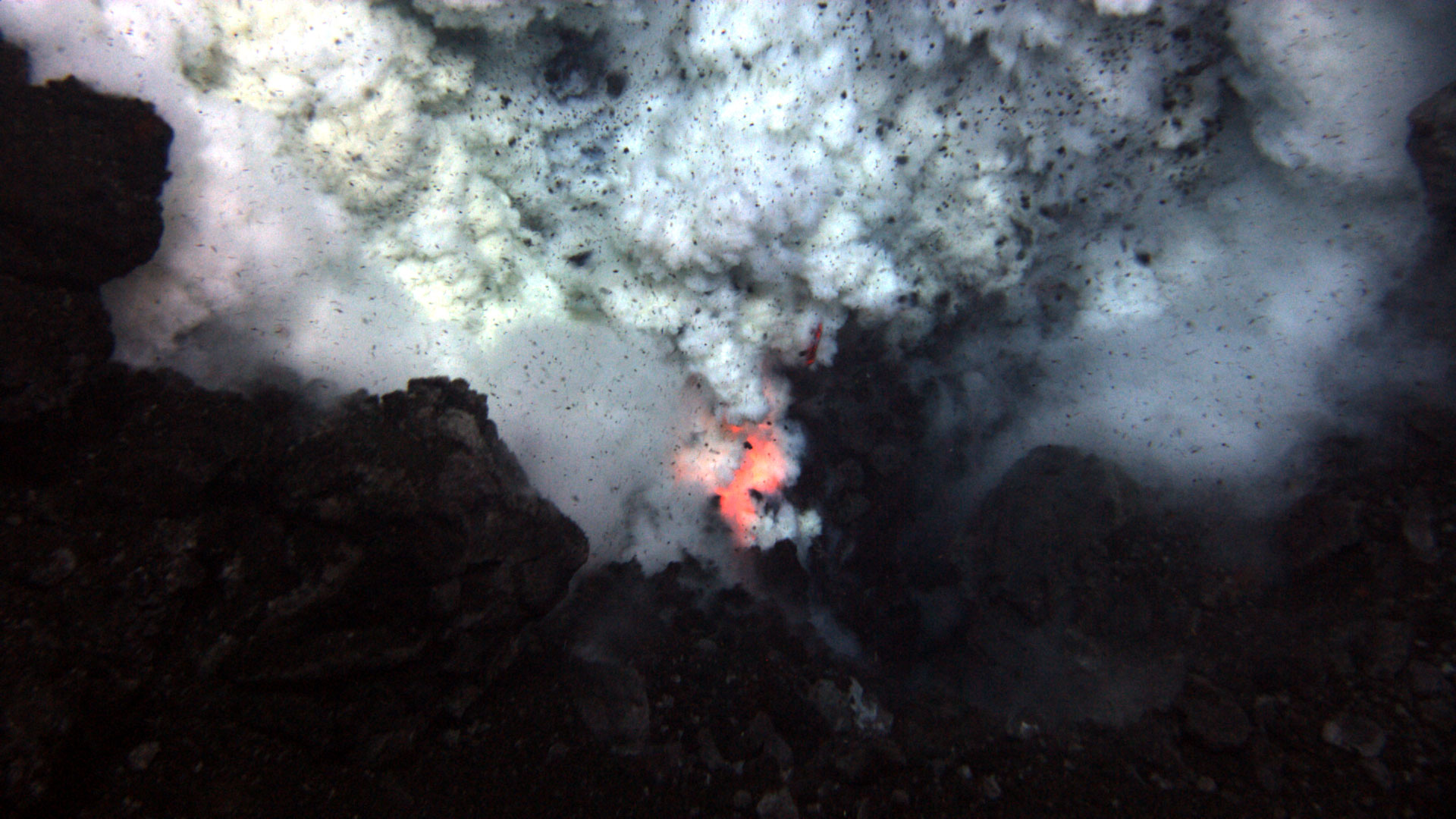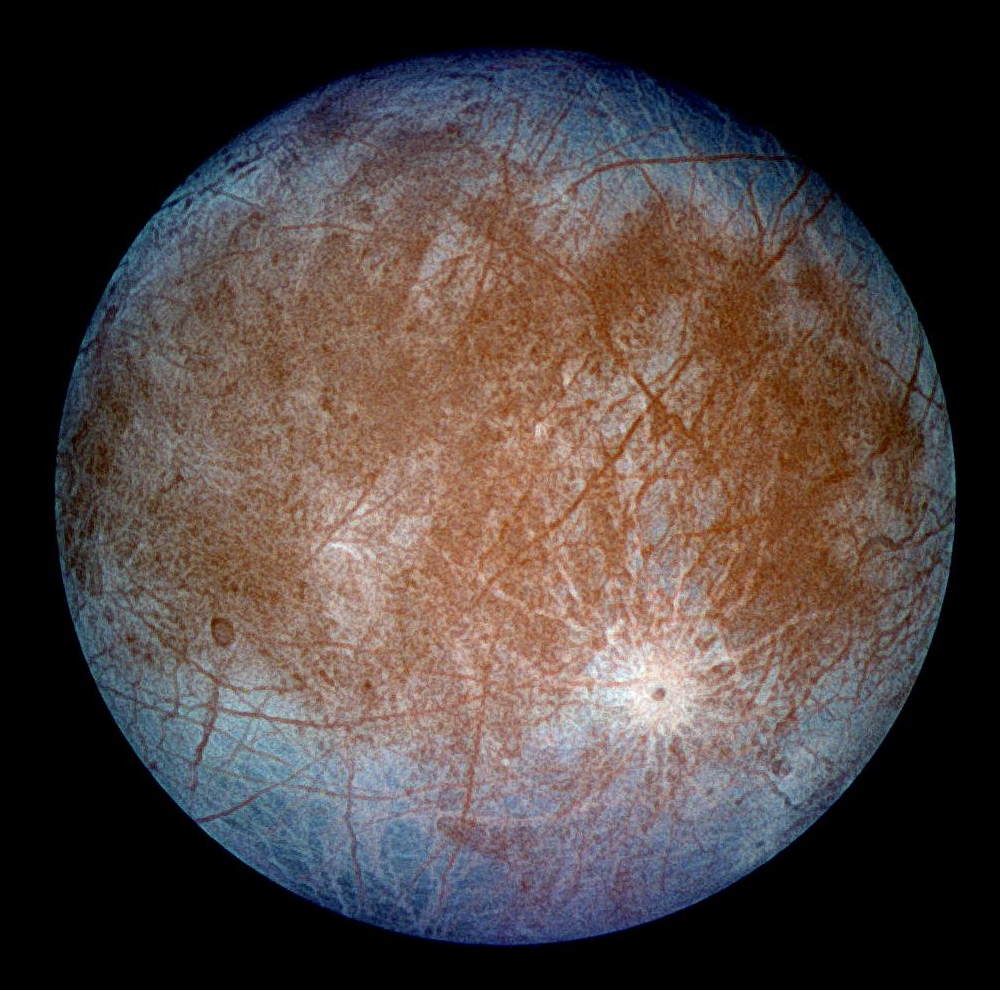News
A joint Indonesian–U.S. expedition in the Sulawesi Sea mapped at least 25 different types of undersea habitats and may have discovered dozens of new species, scientists announced here December 13 at the American Geophysical Union meeting. Among the candidates for new species, which were photographed this summer using a remotely operated vehicle (ROV), was this bubblegum coral, seen here with a brittle star wrapped around it.
Between the Indonesian islands that arc north towards the Philippines, the ocean floor is pockmarked with deep basins and underwater volcanoes. It is an area where oceanic currents collide, tectonic plates die, and species burst forth in a proliferation rarely seen elsewhere on Earth. The shallow areas are best known as the Coral Triangle, where warm seas house coral reefs and an abundance of fish species.
New submarine volcanoes, a large hydrothermal field with a thriving exotic animal ecosystem and areas rich with deep-sea ocean animals are among the discoveries reported today by U.S. and Indonesian scientists who explored the largely unknown deep Sulawesi Sea last summer off the coast of Indonesia.
Scientists using cutting-edge technology to explore waters off Indonesia were wowed by colorful and diverse images of marine life on the ocean floor _ including plate-sized sea spiders and flower-like sponges that appear to be carnivorous.
They predicted Thursday that as many as 50 new plant and animal species may have been discovered during the three-week expedition that ended Aug. 14.
Richard Lutz, a marine biologist at Rutgers University in New Brunswick, New Jersey, and his colleagues were 2,500 metres beneath the ocean’s surface when they encountered the ‘blizzard’. It was April 1991, and an underwater ridge, 900 kilometres off the coast of Acapulco, Mexico, was splitting open, introducing 1,200 °C molten rock to 2 °C water. The results were apocalyptic.
The claim is startling and the evidence indirect, but marine biologists seem open to the idea that multicellular animals can live without oxygen.
Three species of loriciferan, a creature that sounds and looks like something out of a Dr. Seuss book, appear to go their whole lives without oxygen, researchers report online April 6 in BMC Biology.
The claim is startling and the evidence indirect, but marine biologists seem open to the idea that multicellular animals can live without oxygen.
Subscription needed: Read more …
Lying beneath the ocean is spectacular terrain ranging from endless chains of mountains and isolated peaks to fiery volcanoes and black smokers exploding with magma and other minerals from below Earth’s surface. This mountainous landscape, some of which surpasses Mt. Everest heights and the marine life it supports, is the spotlight of a special edition of the research journal Oceanography.
These massive underwater mountains, or seamounts, are scattered across every ocean and collectively comprise an area the size of Europe. These deep and dark environments often host a world teeming with bizarre life forms found nowhere else on Earth. More than 99 percent of all seamounts remain unexplored by scientists, yet their inhabitants, such as the long-lived deepwater fish orange roughy, show signs of habitat destruction and over exploitation from intense international fishing efforts.
Scientists funded by the National Science Foundation (NSF) and NOAA have recorded the deepest erupting volcano yet discovered—West Mata Volcano—describing high-definition video of the undersea eruption as “spectacular.”
“For the first time we have been able to examine, up close, the way ocean islands and submarine volcanoes are born,” said Barbara Ransom, program director in NSF’s Division of Ocean Sciences. “The unusual primitive compositions of the West Mata eruption lavas have much to tell us.”
- « Previous
- 1
- 2
- 3
- 4
- Next »

